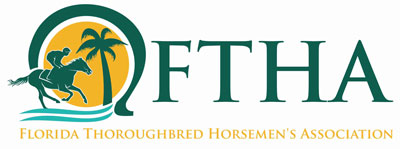February 17, 2012
In 1972, European authorities began their Pattern race system whereby the highest quality black-type events were identified. The Europeans wanted something similar done in North America so the Thoroughbred Owners and Breeders Association, TOBA, took on the grading of races in 1973. In 1981, international auction houses, national breeders’ organizations and racing authorities formed the International Cataloguing Standards Committee to achieve uniformity throughout the world, and by doing so they recognized the TOBA North American Graded Stakes Committee as the sole grading authority for North American races. In 1998, Canadian authorities opted to grade their own stakes, and thus, the TOBA grading committee became the American Graded Stakes Committee.
Racetracks obviously benefit from having as many graded stakes at their facilities as possible. Owners now saw their horse’s value increase if they were successful in these graded stakes. So graded stakes were deemed a good thing and TOBA and their American Graded Stakes Committee were applauded by America’s racing industry.
The stated goal of the American Graded Stakes Committee was to identify and assess those races which over a recent period of time have had the highest quality horses competing which were defined in terms “of the relative of excellence of participating horses.” In other words, the American Graded Stakes Committee was to identify those stake races which regularly had fields of top quality race horses.
Nowhere did TOBA’s stated goal indicate that they were to determine and dictate the conditions under which these stakes races were to be contested. It is one thing for the Breeders’ Cup to dictate the conditions under which their races are contested, because the funding for these races comes from the Breeders’ Cup. However, monies for non-Breeders’ Cup graded stakes races does not come from TOBA. It comes from the owners and trainers at a given track giving up a portion of their purse pool for these graded stakes.
This fact does not seem to bother TOBA in the least, as they are now demanding that graded stakes be run with 2 mcg/ml threshold of Phenylbutazone ( bute) and that no Salix/Lasix (Furosemide) be permitted for two year old graded stakes. For bute there is at least a 2mcg/ml RMTC/ARCI Model Rule on the books. But the RMTC/ARCI Model Rule for Furosemide is that Lasix is permitted in all horses if administered by the official veterinarian – the racing veterinarian or his/her designee. The RMTC passed this Model Rule last October at their meeting in Scottsdale, Arizona, by a unanimous vote with TOBA present and apparently voting “Yes.”
Banning Lasix in graded stakes for two year olds is, of course, the stance of The Jockey Club, and of the six TOBA members on the American Graded Stakes Committee five are members of the Jockey Club. Is this just a coincidence? Interestingly, The Jockey Club also voted “Yes” in Arizona to permitting Lasix on race day.
Horsemen everywhere need to protect their purse pools and stand up to TOBA’s dictating conditions under which Graded Stakes are to be contested that do not have an industry consensus such as a Model Rule. Race tracks need to support their horsemen and let these stakes be run without any grading by TOBA’s American Graded Stakes Committee, unless, of course, TOBA wants to fund these races!
TOBA, America’s racing industry is no longer applauding.
954.457.3516 | info@floridahorsemen.org



